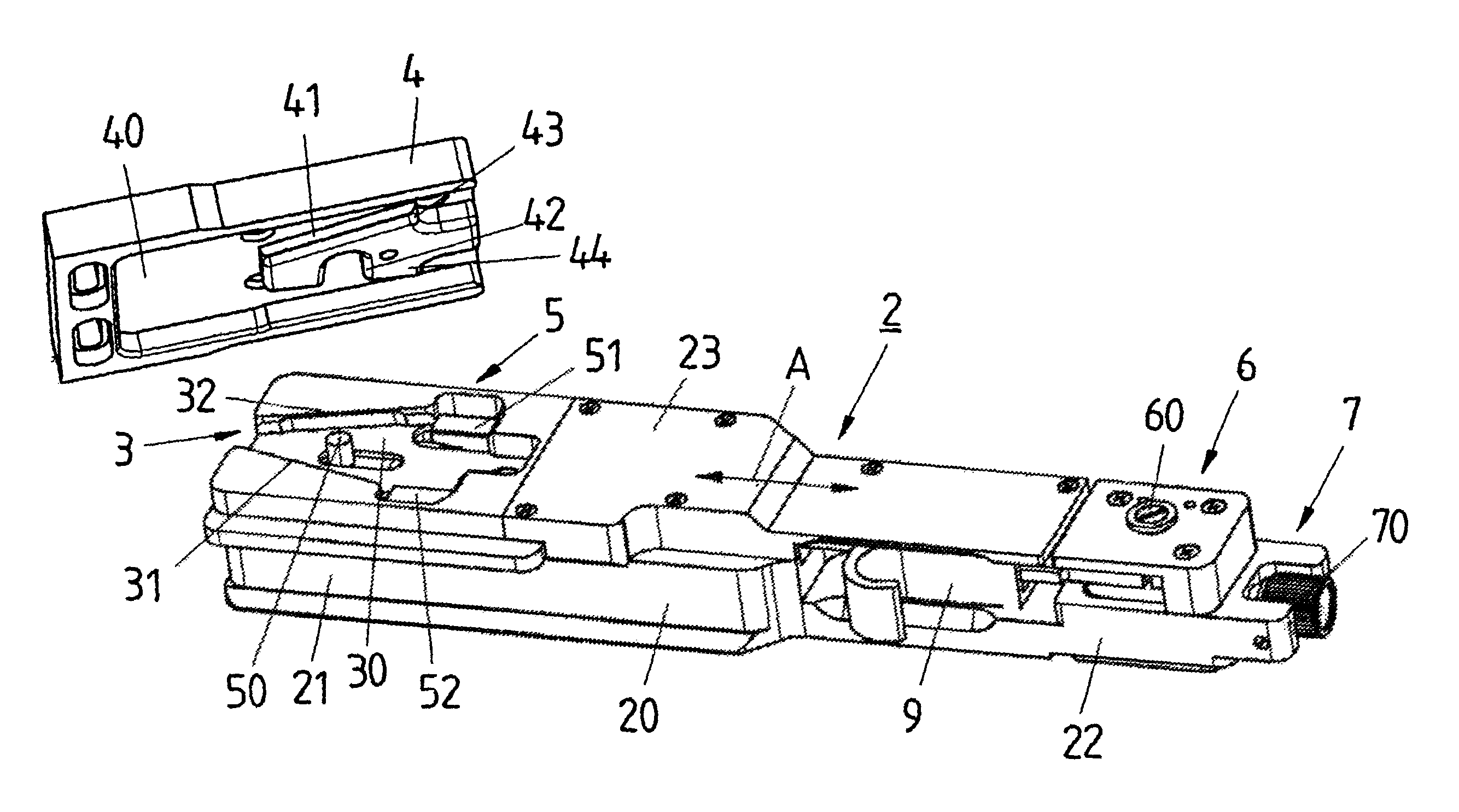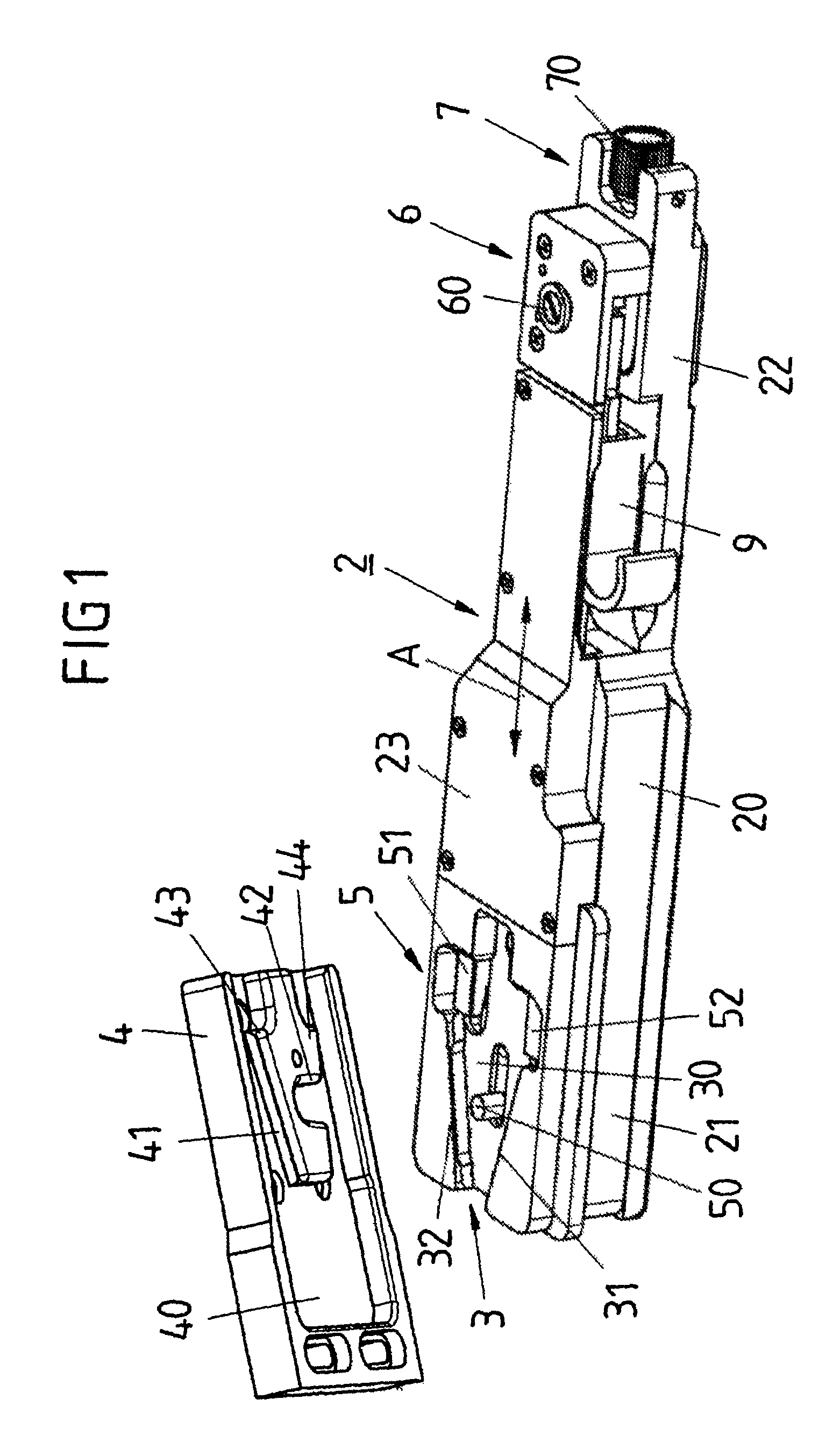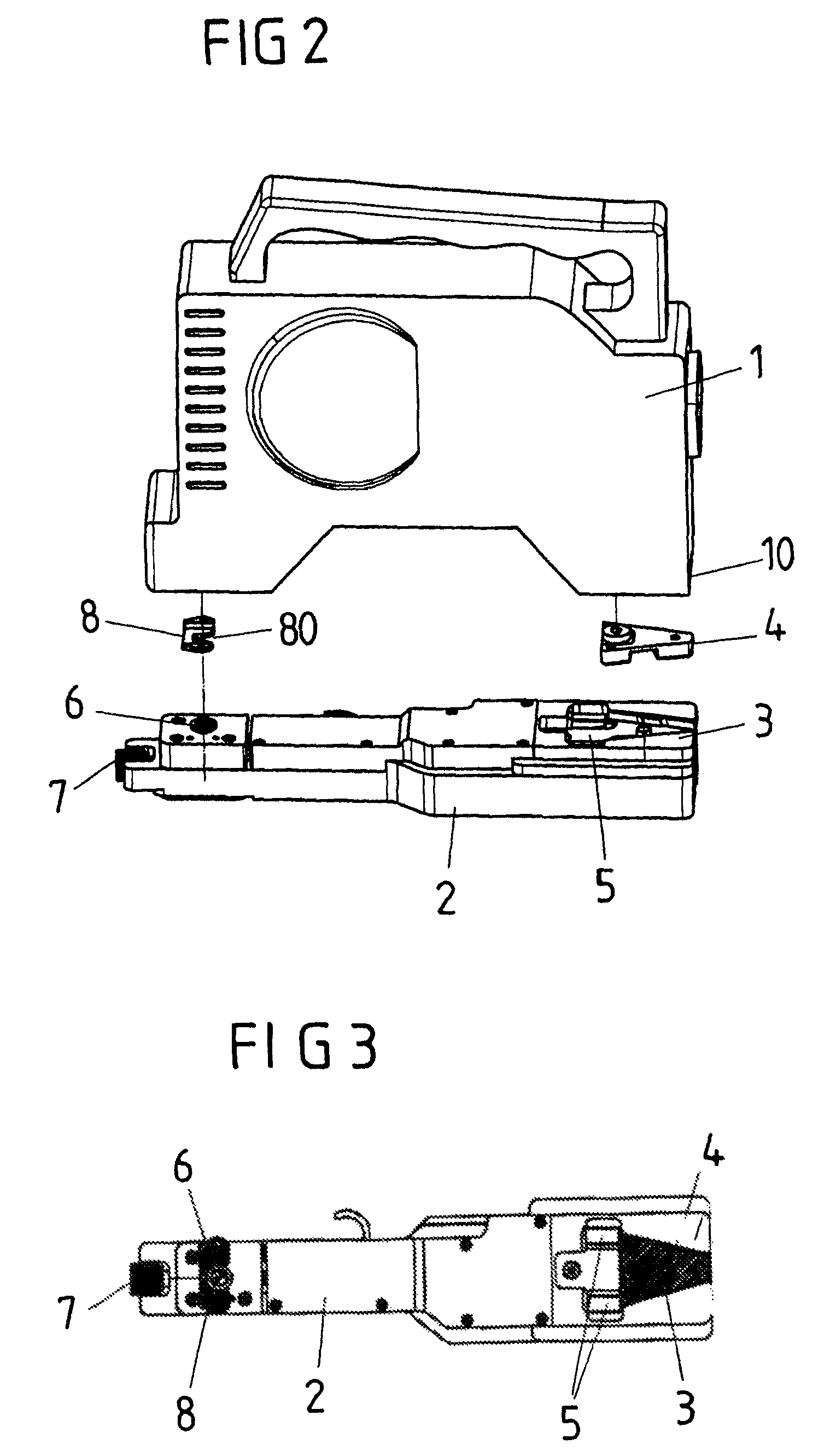Device for connecting a camera to a supporting device
a technology for supporting devices and cameras, which is applied in the direction of dovetail-like connections, large fixed members, and television systems, etc., can solve the problems of blurred photos, manual force applied to the locking plate to the camera, and inability to secure in any way, so as to achieve high compressive force, low operating force, and high compressive force
- Summary
- Abstract
- Description
- Claims
- Application Information
AI Technical Summary
Benefits of technology
Problems solved by technology
Method used
Image
Examples
Embodiment Construction
[0033]The locking plate 2 contains a base plate 20 and a cover plate 23 and, according to FIG. 4, has, at the bottom of the base plate 20, a slotted box profile 24 by means of which the locking plate 2 can be plugged onto a corresponding mating profile of a supporting device, for example a camera stand, and can be connected in a positive-closing manner to this supporting device. The design and functioning of the locking plate 2 make is possible for a camera to be quickly and easily positioned on the locking plate 2, clamped into the locking plate 2 and locked to the locking plate 2 and disengaged from the locking plate 2.
[0034]In its front region 21, the locking plate 2 has a wedge-shaped recess 3, of which the base 30 is bounded by two guides 31, 32 with inclined walls for forming a dovetail guide, these approaching one another conically in relation to the longitudinal axis A which runs from the front region 21 to the rear region 22 of the locking plate 2. The wedge-shaped recess 3...
PUM
 Login to View More
Login to View More Abstract
Description
Claims
Application Information
 Login to View More
Login to View More - R&D
- Intellectual Property
- Life Sciences
- Materials
- Tech Scout
- Unparalleled Data Quality
- Higher Quality Content
- 60% Fewer Hallucinations
Browse by: Latest US Patents, China's latest patents, Technical Efficacy Thesaurus, Application Domain, Technology Topic, Popular Technical Reports.
© 2025 PatSnap. All rights reserved.Legal|Privacy policy|Modern Slavery Act Transparency Statement|Sitemap|About US| Contact US: help@patsnap.com



